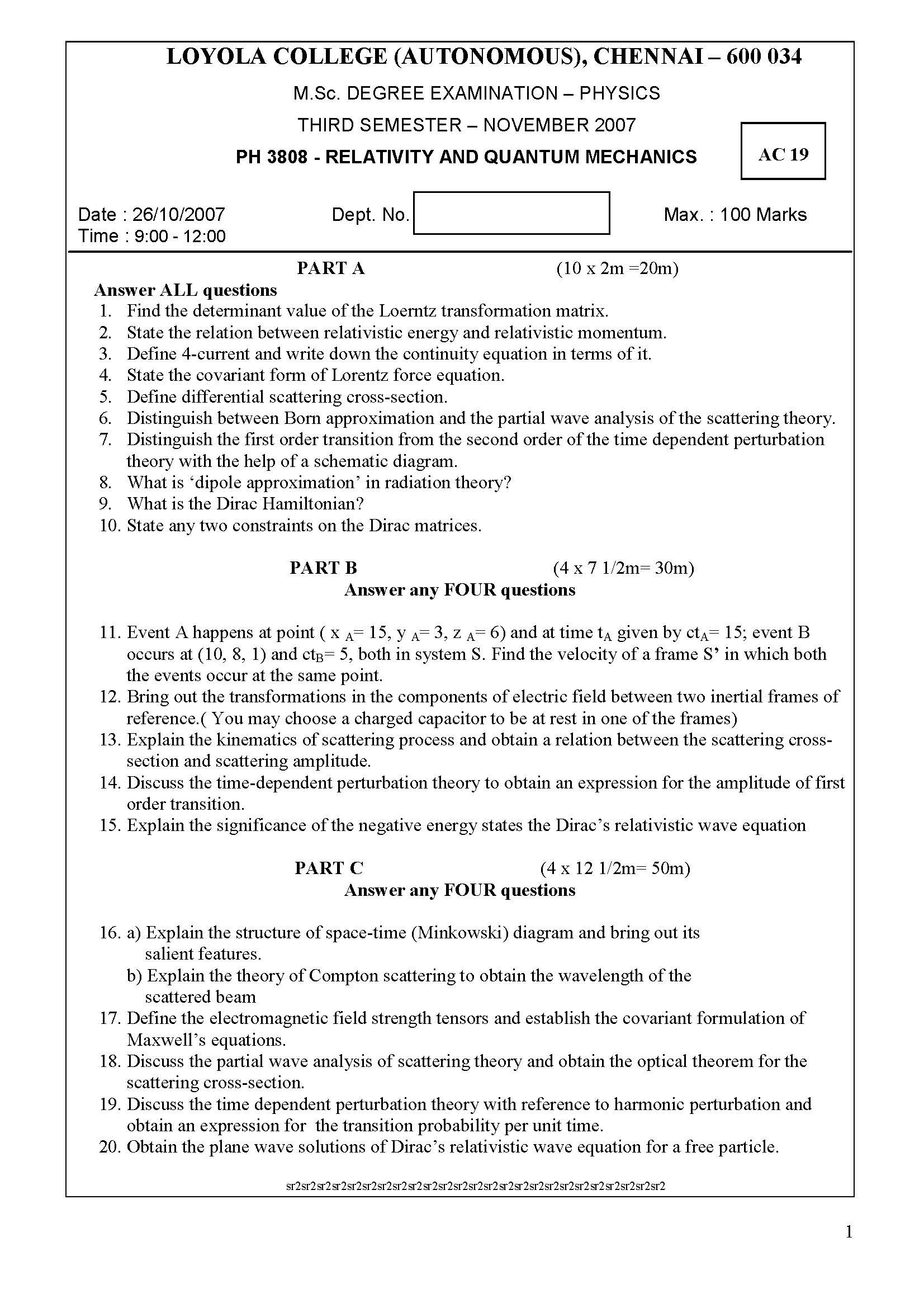LOYOLA COLLEGE (AUTONOMOUS), CHENNAI – 600 034.
M.Sc. DEGREE EXAMINATION – PHYSICS
SECOND SEMESTER – APRIL 2003
PH 2803 / PH 825 – MATHEMATICAL PHYSICS
28.04.2003
1.00 – 4.00 Max : 100 Marks
PART – A (10´ 2=20 marks)
Answer ALL questions.
- Starting from the general equation of a circle in the xy plane A (x2 +y2) + Bx + Cy +D=0 arrive at the z z* representation for a circle.
- State Liouville’s theorem.
- Develop Laurent series of about z = -2.
- Write the Jacobian of the transformation .
- Show that the Dirac delta function .
- State convolution theorem.
- Solve the differential equation + .
- Obtain the orthonormalising constant for the series in the interval (-L, L).
- Evaluate using the knowledge of Gamma function.
- Generate L2 (x) and L3 (x) using Rodrigue’s formula for laugerre
PART – B (4´ 7.5=30 marks)
Answer any FOUR.
- Obtain Cauchy Rieman equations from first principles of calculus of complex numbers.
- Determine a function which maps the indicated region of w plane on to the upper half of the z – plane
v y
w plane z plane
p T
Q s u p1 Q1 S1 T1 X
-b +b -1 +1
- Develop half-range Fourier sine series for the function f (x) = x ; 0 < x < 2. Use the results to develop the series .
- Verify that the system y11 + ; y1(0) = 0 and y (1) = 0 is a Sturm-Liouville System. Find the eigen values and eigen functions of the system and hence form a orthnormal set of functions.
- (a) If f (x) = obtain Parseval’s Identity
where Pk (x) stands for Legendre polynomials.
- Prove that (x) = 2n – 1 Hn (x) where Hn (x) stands for Hermite polynomials.(4+3.5)
PART – C (4´12.5=50 marks)
Answer any FOUR.
- Show that u (x, y) = Sin x Coshy + 2 Cos x Sinhy + x2 +4 xy – y2 is harmonic Construct f (z) such that u + iv is analytic.
- (a) Evaluate using contour integration.
(b) Using suitable theorems evaluate c : . (7+5.5)
- (a) The current i and the charge q in a series circuit containing an inductance L and
capacitance C and emf E satisfy the equations L and i = . Using
Laplace Transforms solve the equation and express i interms of circuit parameters.
- Find , where L-1 stands for inverse Laplace transform. (3.5)
- Solve the boundary value problem . with Y (0, t) = 0; yx (L, t) = 0
y (x, 0) = f (x) ; yt (x, 0) = 0 and and Interpret physically. - Solve Bessels differential equation using Froebenius power series method.
